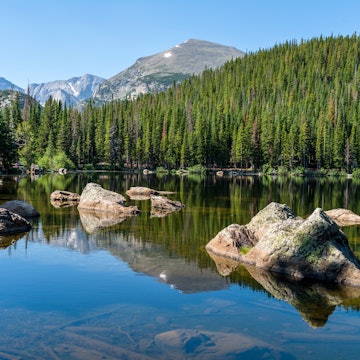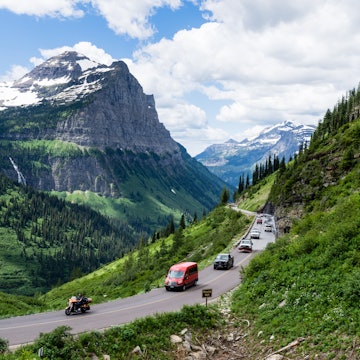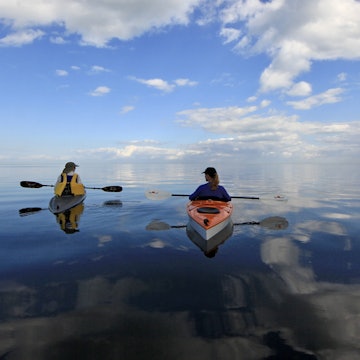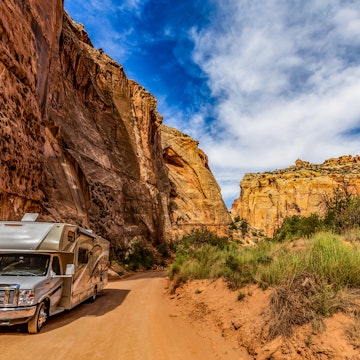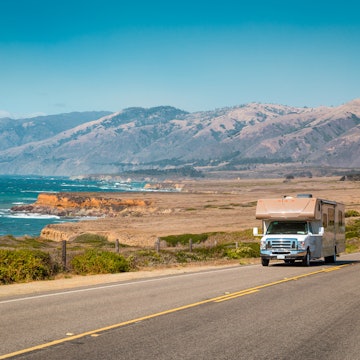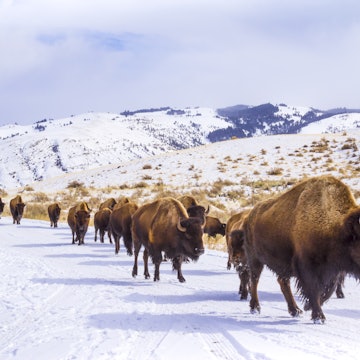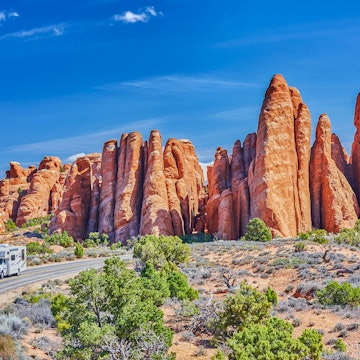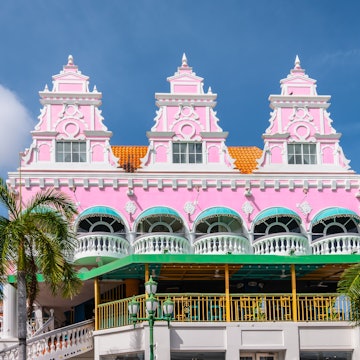
How to visit 6 of the USA’s incredible national parks by train

May 20, 2025 • 9 min read

The Pacific Surfliner traveling along the California coastline. htrnr/Getty Images
The National Park Service (NPS) preserves some of the most remote landscapes in the United States, but that doesn’t necessarily mean you need a car to visit them. In fact, early travelers rarely arrived by car, and the railways and the development of many US national parks are deeply intertwined.
Long before the interstate highway system existed and private car ownership became standard, a dense network of passenger trains crisscrossed the country. As the railroads expanded their lines west in the 19th and 20th centuries, they enticed passengers to take the train to experience the disappearing “frontier,” places that had been lived in by Native people for countless generations but were lesser known to more recent European arrivals. Outfits like the Utah Parks Company, a subsidiary of the Union Pacific Railroad, constructed restaurants and hotels – some of which are still operational more than a century later – at Zion National Park, Bryce Canyon National Park, Cedar Breaks National Monument and Grand Canyon National Park in Arizona to draw in visitors. Visitors arrived at a gateway station by train and were then bussed around on a loop tour dubbed the “Grand Circle.”
While many passenger services and tracks have sadly been removed, it’s still possible to visit some of the USA’s majestic national parks on Amtrak, the country’s only national passenger rail service, or via privately operated railways that run on limited stretches of track. The rugged, jaw-dropping geography that makes the parks so iconic means that the train tracks won’t always drop you right at the parks’ doorsteps, but you can still arrive like the spellbound passengers of long ago.
Before visiting any US national park, visitors should be aware that staffing cuts in the NPS are having an effect on the amenities available.

1. Head to Glacier National Park on Amtrak’s Empire Builder
Route: Chicago to Portland or Seattle
Home to more than 700 miles of hiking trails that wind past jagged peaks, hundreds of mirror-like high-country lakes, and huckleberry-dotted landscapes loved by black and grizzly bears, Glacier National Park in Montana might not seem like an obvious choice for a train trip, but it’s actually one of the most accessible national parks on Amtrak’s network. The park was a major challenge to reach when it was established in 1910, but the Great Northern Railway, built by businessman James J Hill, delivered delighted passengers to “Little Switzerland,” and those train stations are still used by modern travelers. Hill’s nickname of the “Empire Builder” was adopted by Amtrak in homage to this history.
Getting to Glacier National Park by train: Amtrak’s 2206-mile-long Empire Builder line stops at East Glacier station and West Glacier station. Free shuttles run on the east and west sides of the parks, traveling to visitor centers, trailheads and along the famous Going-to-the-Sun Road.
Where to stay: Glacier Park Lodge, historic digs built from 900-year-old logs and opened in 1913, is a five-minute walk from East Glacier station. An excellent choice for railfans is LOGE Glacier, a short walk from the Essex Amtrak station. It opened in 2024 but occupies a long-standing inn built by the Great Northern Railway for its workers. Some of the rooms are even in refurbished train cars.

2. Visit Channel Islands National Park from the Pacific Surfliner
Route: San Diego to San Luis Obispo
California is a legendary state for national parks and road trips, but you don’t have to miss out if you’re not driving. Off the coast between Santa Barbara and Los Angeles, Channel Islands National Park is nicknamed “California’s Galapagos” because of the nearly 150 species of plants and animals found here and nowhere else in the world, such as the absolutely adorable island fox, which you might spot scampering across the islands’ hiking trails. A boat trip from the cities of Ventura or Oxnard is required to reach the Channel Islands, and even this ride turns into an animal-spotting safari, with common dolphins jumping across the boat’s wake and seasonal sightings of orcas and gray and humpback whales.
Getting to Channel Islands National Park by train: Take Amtrak’s Pacific Surfliner and get off at Ventura or Oxnard. Island Packers runs boat trips to five of the islands from these two cities, with most departures from Ventura. Amtrak’s Coast Starlight line also stops at both Ventura and Oxnard.
Where to stay: Within Channel Islands National Park, you’re limited to primitive campgrounds with pit toilets, and you must pack in and out all of your food and water. Chain hotels line the beaches in Oxnard and Ventura – Zachari Dunes on Mandalay Beach in Oxnard has sublime sunset views.

3. Hit two of Utah’s “Mighty Five” national parks on the Rocky Mountaineer
Route: Denver, Colorado, to Moab, Utah
Utah packs an impressive number of national parks into its square mileage, and two of them, Arches National Park and Canyonlands National Park, are accessible on a privately operated luxury train line run by Rocky Mountaineer (which is changing its name to Canyon Spirit in 2026). The “Rockies to the Red Rocks” service travels between Denver and Moab, the parks’ gateway town in Utah.
The appeal of Arches is right in its name, and nowhere on Earth has more of this type of rock formation than this national park. Just across the highway but a world away, Canyonlands is Utah’s largest and least-visited national park. It’s divided into four districts, and Island in the Sky is the easiest to reach from Moab. This area occupies the top of a majestic mesa thousands of feet above the Colorado and Green Rivers, the powerful forces that sculpted this land into sheer canyons and needle-like pinnacles.
Getting to Arches and Canyonlands national parks by train: Rocky Mountaineer offers excursions to Arches and Canyonlands with Moab-based outfitters. In 2026, an extension to the company’s route will add time on the rails between Moab and Salt Lake City, giving access to Yellowstone National Park via a five-hour bus to its gateway towns of Jackson and West Yellowstone.
For a bonus national park, pencil in some time in Denver to make it to Rocky Mountain National Park. Take a shuttle from Denver’s Union Station to the town of Estes Park on Bustang. Other shuttle buses travel between Estes Park and trailheads and scenic points in Rocky Mountain National Park.
Where to stay: Moab is all about the landscapes, and two of the best places to stay are on scenic stretches outside of town. Along the Upper Colorado River Scenic Byway (Hwy 128), Red Cliffs Lodge is a dude ranch gone deluxe, with river-facing rooms, horseback riding and an on-site movie museum dedicated to Westerns shot in and around the property. Secluded south of town and closer to the Needles district of Canyonlands National Park, ULUM Moab offers next-level glamping, with plush beds in canvas tents on 200 acres overlooking its own rock arch.
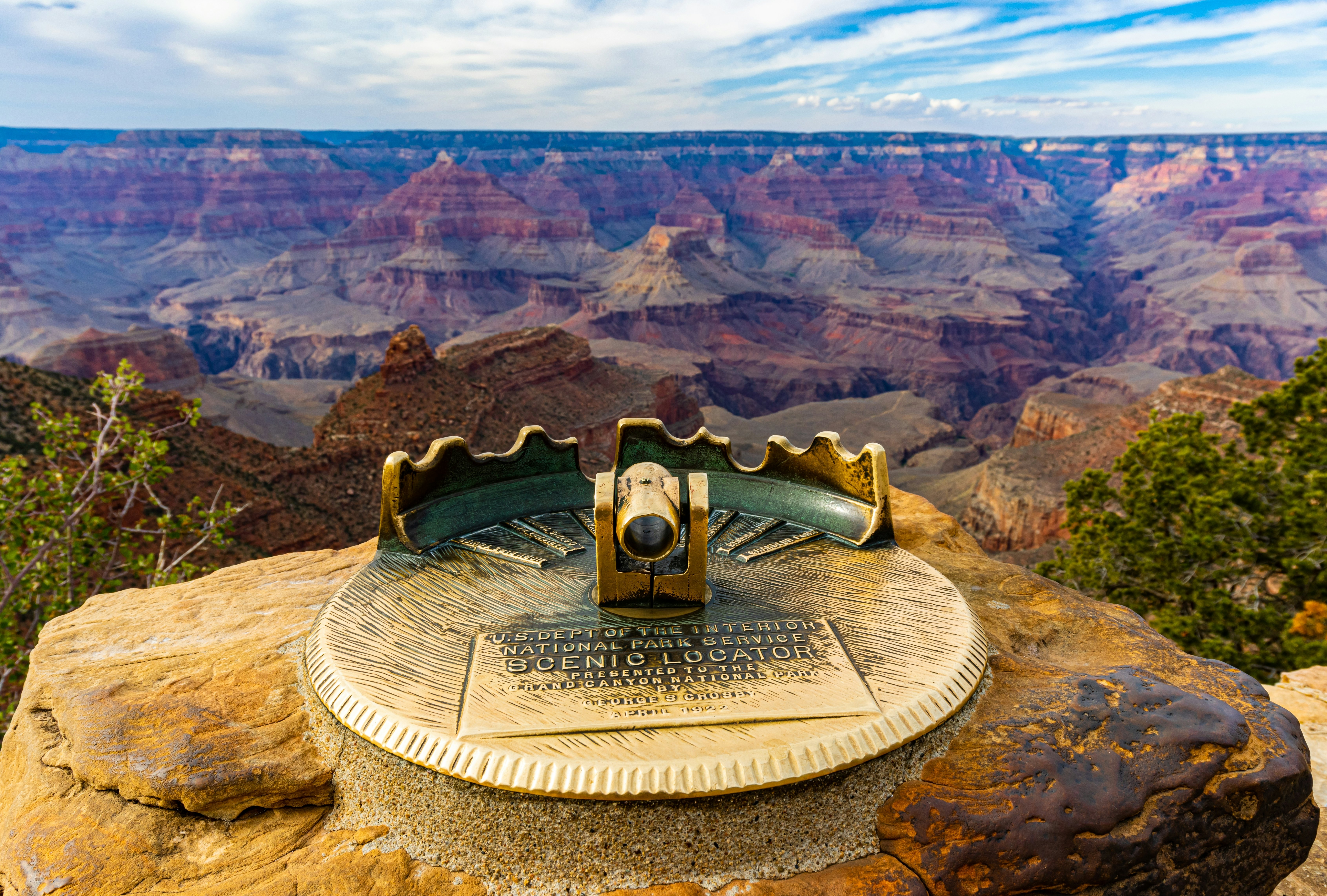
4. Reach the Grand Canyon on the Grand Canyon Railway
Route: Williams to Grand Canyon Village, Arizona
Arrive in one of the country’s most popular national parks like a traveler of yore aboard the historic Grand Canyon Railway, which has been bringing visitors to the Grand Canyon for longer than it’s been a national park. This train journey is a particularly good choice for families, and kids might witness costumed actors of a Wild West gang attempting to pull off a train robbery at the start of the adventure. The train tracks pass through gorgeous high-elevation scenery up to 7000ft, but of course, the real treat is at the end of the line, when you step off the train within walking distance of the Grand Canyon’s edge.
Getting to Grand Canyon National Park by train: The Grand Canyon Railway is usually done as a day trip, setting off in the morning from Williams, stopping in the South Rim’s Grand Canyon Village for three hours and then returning to Williams. Historic train enthusiasts should time their visit for Saturdays, when steam locomotives pull the trains, or book tickets to ride in the refurbished 1923 Pullman cars with open windows.
Where to stay: Grand Canyon Railway runs its own hotel in Williams, but El Tovar Lodge in Grand Canyon Village oozes train history. Built in 1905, the hotel is a former “Harvey House,” opened by the Fred Harvey Company along the Santa Fe Railway’s lines, and was considered the most elegant hotel west of the Mississippi.

5. Check out Gateway Arch National Park on the Texas Eagle
Route: Chicago to San Antonio
It feels a little like cheating to call Gateway Arch, an urban area sandwiched between the Mississippi River and downtown St Louis, a national park, but we don’t make the rules. One of the best things to do in St Louis, this largest artificial monument in the United States rises 630ft and occupies the country’s smallest national park. At its base, the free-to-visit Museum at the Gateway Arch has interactive exhibits about the history of St Louis and the arch’s architecture and engineering. Afterward, you can squeeze into small trams that feel like 1960s space capsules to trundle to the top of the arch.
Getting to Gateway Arch National Park by train: Amtrak trains from Chicago and San Antonio (on the Texas Eagle) and Kansas City (on the Missouri River Runner) arrive at St Louis’ Gateway Transportation Center. From there, it’s 1.5 miles to the Gateway Arch.
Where to stay: Don’t miss – or get confused by – historic Union Station, which no longer serves trains but has been transformed into a kid-friendly play place with attractions, restaurants and shops. Fortunately, it has kept the elegant Union Station Hotel, originally opened in 1894. Another cultural gem – and one of the newest hotels on the St Louis scene – is the art-filled 21c Museum Hotel, which opened in 2023, taking over a 1920s former YMCA building downtown.

6. Check out New River Gorge, the US’s newest national park, on the Cardinal
Route: Chicago to New York City
Designated in 2020, New River Gorge in West Virginia is the latest place in the country to be declared a national park. The New River is anything but, and this national park protects the oldest waterway in the country. Hiking trails meander through primeval forests as white water rafters spill along the sets of rapids that can get as gnarly as class V. Best of all? This slice of nature is reachable via three Amtrak stations within the national park boundaries.
Getting to New River Gorge National Park by train: Hinton, Prince and Thurmond stations are on Amtrak’s Cardinal route, which runs three times a week. Thurmond is a flag stop, meaning that the train stops only for passengers with reservations. These stations are remote and see few passengers, so it’s best to arrange a tour or onward transportation to explore the national park.
Where to stay: Start your time in Appalachia in a log cabin at ACE Adventure Resort. It’s only 1.5 miles from Thurmond station as the crow flies, but a 13-mile drive on winding mountain roads. The resort arranges white water rafting trips and other outdoor activities, including zip lining, hiking and fishing.








